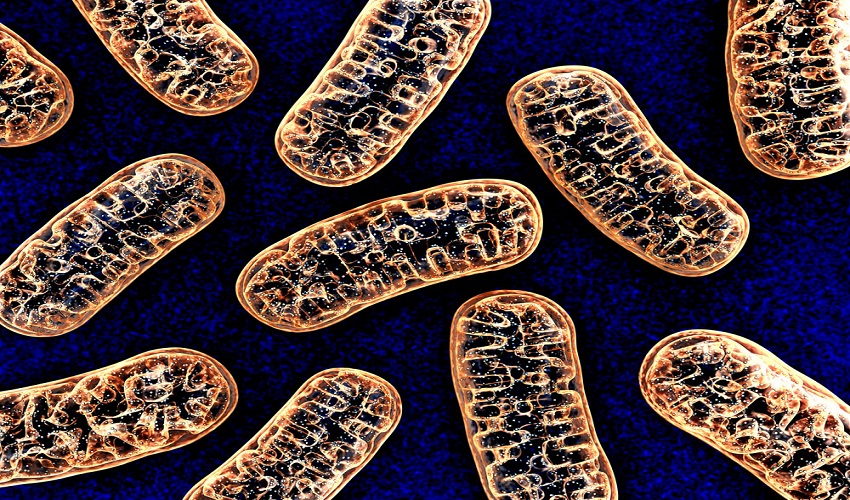What is Mitochondrial Myopathy? Mitochondrial Myopathy is generally known as a group of neuromuscular diseases. It is caused due to the damaged of the mitochondria. On the other hand, Mitochondria are basically known as structures within cells that transform the energy contains in the food into a form that cells can use. Matter of fact, every cell contains hundred to thousand of mitochondria and it is located in the fluid which surrounds the nucleus also known as cytoplasm.
Furthermore, mitochondria are an energy-producing structure that is present in cells that serve as a power plant. In addition, some of the common types of mitochondrial myopathies are Kearns-Sayre syndrome (KSS), Leigh syndrome (subacute necrotizing encephalomyopathy) and maternally inherited Leigh syndrome (MILS), Mitochondrial DNA depletion syndrome (MDS) and Maternally inherited deafness and diabetes (MIDD).
Diagnosis and Treatment of mitochondrial myopathies
Mitochondrial disorders are a heterogeneous group of diseases that are caused by primary respiratory chain dysfunctions. Moreover, muscle tissue is highly metabolically active, and therefore myopathy is a common factor in the clinical presentation of these disorders, although core neurological features that outweigh this.

Besides, this review aims at a general readership in medicine and neurology and offers a scientific guide to the diagnosis, analysis, and treatment in mitochondrial myopathies. Furthermore, Practical management issues are emphasized while some recent changes are included in the sector.
Furthermore, the diagnostic tests fall into two broad groups for patients with suspected MM. Moreover, the first examination group indicates the existence of the disease in various organ systems (summarized in Table III) and as such does not support a diagnosis of MM.
Nonetheless, these tests are critical for defining the degree of the phenotype, excluding other disorders and increasing or decreasing the clinical presumption of a diagnosis of MM.
Treatment
MM currently does not have the disease-modifying therapy available. Besides, nutritional supplements have been investigated with placebo-controlled studies, double-blind. Further, these includes creatine (39–41), CoQ10 (42,43), cysteine (44), dichloroacetate (42,45–48), dimethylglycine (49), carnitine (38). None have demonstrated efficacy in endpoints of clinical illness, though several non-blinded trials.

Furthermore, the Following Table lists examples of drugs with documented efficacy in MM that has not yet been tested in placebo-controlled trials. Similarly, further research is needed to assess if any of these agents have therapeutic benefits.
Treatments with reported benefit in mitochondrial myopathy which may benefit from further study in blinded placebo-controlled trials.
| L-arginine | Reduction in acute symptoms of stroke-like episodes, reduction of incidence of stroke-like episodes in MELAS; improvement of TCA metabolic rate on C11-PET in cardiomyopathy. | Non-blinded, placebo-controlled study of 24 MELAS patients; C11-PET study in 6 patients with MELAS |
|---|---|---|
| Ascorbate and menadione | Improvement on 31PNMR and symptomatic | Single case reports in complex III deficiency |
| A high-fat diet with vitamins and CoQ10 | Short-term improvement in neurodevelopment, seizure control, level of consciousness | An open-label study of 15 paediatric patients |
| Idebenone | Biochemical improvements; delayed disease progression; improvement of respiratory function | Single case report |
| Magnesium | Resolution of refractory status epilepticus in Alpers syndrome | Two patients |
| Nicotinamide | Biochemical improvements. Reduced encephalopathy and stroke-like episodes in one case | A six-month open-label trial of seven MELAS patients, and single case report |
| Succinate | Improvement of respiratory muscle weakness; decrease in stroke-like episodes. | Single case reports |
Also See: Coronavirus Prediction Hoax And Its Cognitive Impacts
PREVENTING TRANSMISSION OF mtDNA DISEASE
Given the lack of curative care in many cases and the highly debilitating phenotype, avoiding transmission of mtDNA defects is a significant goal for families. Moreover, One solution to this is the transplantation of the nuclear genome from an infected woman’s oocyte or embryo into those from a healthy donor (Fig. 1).
This has the potential to allow women to have a GM child without transmitting mutated mtDNA. In addition, early mouse experiments using fertilized eggs (1 cell zygote) revealed that male and female pronuclei transplantation between zygotes was consistent with the ongoing production and birth of normal offspring.

Also See: Kate Broderick: The Scientist Who Is Working Hard To Find The Vaccine For Wuhan Coronavirus
Furthermore, It was later demonstrated that pronuclear transfer is effective in preventing the transmission in a mouse model of an mtDNA rearrangement. On the other hand, Proof of the hypothesis work was performed using abnormally fertilized human zygotes (25) (Fig. 2). Besides, a similar technique involving metaphase II spindle transplantation between unfertilized oocytes led to live-born rhesus monkeys.

In addition, nuclear transfer strategies intended to prevent mtDNA disease transmission. (A) Procedure for the pro-nuclear transfer using mitochondrial donor zygote. (B) Metaphase II spindle transfer technique using a mitochondrial oocyte donor accompanied by fertilization with intracytoplasmic sperm injection. Besides, both strategies may include post-transfer monitoring of embryo development.
For more Trending topic connect to Wikye









